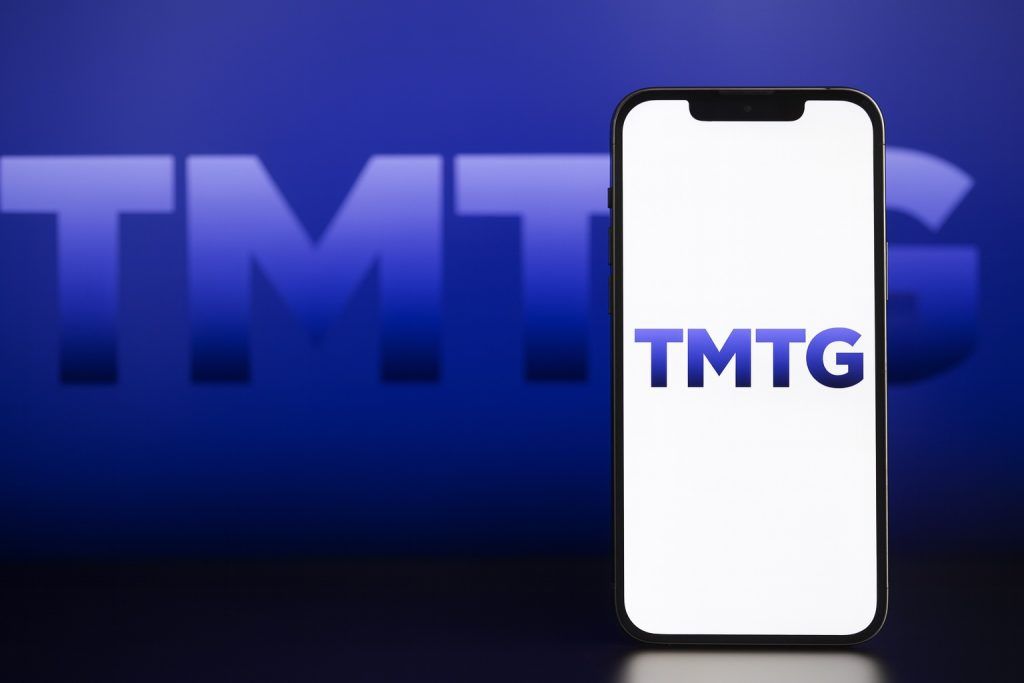SPY ETF Update (Nov 15, 2025): The SPDR S&P 500 ETF Trust (SPY) ended this week on a slightly softer note as global equities struggled to balance optimism and caution [1]. After touching record highs earlier in the month, SPY pulled back about 1% in recent sessions amid choppy trading. Investors are digesting a mix of relief over positive developments – such as the end of the U.S. government shutdown – and anxiety over interest rate policy. Overall market mood is cautiously optimistic, with traders weighing hopes of a “soft landing” against jitters that the Federal Reserve might slow the pace of rate cuts [2].
Recent News & Macroeconomic Drivers
Federal Reserve Easing & Inflation: The macro backdrop in November 2025 is defined by a pivot in Fed policy. In late October, the Federal Reserve cut interest rates by 0.25%, its second consecutive cut, citing a softening labor market [3]. Chair Jerome Powell has stressed that further easing is “not a foregone conclusion,” injecting some uncertainty into December’s meeting outlook [4]. Markets had been pricing in another 25 bps cut next month, but Fed officials’ recent hawkish pushback on aggressive rate-cut bets has tempered those expectations [5]. Meanwhile, inflation is gradually cooling. The latest CPI data (released after a data blackout during the shutdown) showed consumer prices +3.0% year-over-year, a tick higher in September but still lower than forecast [6]. This remains above the Fed’s 2% target, but the trend is improving – private gauges like Truflation even put current inflation near 2.3% [7]. With gasoline and shelter costs expected to ease, analysts are hopeful for further disinflation into year-end [8]. In short, the Fed appears to be transitioning from fighting inflation to supporting growth, albeit cautiously.
Earnings Season Strength: The Q3 2025 earnings season wrapped up in early November with impressively strong results. Roughly 82% of S&P 500 companies beat earnings estimates, topping the 5- and 10-year average beat rates [9]. Earnings growth came in around +13.1% year-over-year [10] – marking the fourth straight quarter of double-digit profit growth for the index. Revenue growth was robust as well (~8% YoY), indicating solid demand. Notably, technology and financial sectors led the profit gains [11], along with surprises from industrials and consumer discretionary firms. In contrast, parts of communication services saw modest declines [12]. Big Tech’s strong results and upbeat forecasts have been a driving force behind the market’s rise. The tech-heavy Nasdaq 100 surged nearly 5% in October on the back of AI-fueled earnings and optimism [13]. This earnings resilience – combined with ongoing enthusiasm around AI investment – has helped push the S&P 500 to new all-time highs as of late October [14]. However, some investors are questioning how long double-digit earnings expansion can continue, especially if economic growth moderates next year.
Economic & Geopolitical Developments: The U.S. economy surprised to the upside in Q3, with GDP growth estimates around 4% [15] (annualized) – much stronger than anticipated earlier in the year. Consumer spending remained a pillar of strength heading into the holiday season, aided by a healthy job market (unemployment ~4.3%) and low loan delinquencies [16] [17]. That said, the recent government shutdown (which began October 1 and extended for over a month) injected some turbulence. While it delayed official data releases and created a minor drag on federal employees’ income, markets mostly shrugged it off as political theater [18]. By early November, a deal to reopen the government sparked a relief rally as a major overhang on market confidence was removed [19]. Another fall headwind was a flare-up in U.S.–China trade tensions in October – China’s restriction on rare-earth exports and a subsequent U.S. tariff threat briefly rattled stocks. However, a late-October summit between President Trump and President Xi yielded a ceasefire with both sides stepping back from escalation [20]. This helped ease fears of a renewed trade war. Outside of trade, geopolitical news has been relatively muted, though investors remain watchful of any overseas conflicts or surprises that could impact oil prices or supply chains. On balance, November’s macro tone is one of resilience: economic growth has held up better than expected, inflation is inching lower, and policy risks (like the shutdown and trade spats) have been managed without derailing the market.
Technical Analysis – Support, Resistance & Trends
After a relentless six-month rally, technical signals on SPY are mixed as of mid-November. The ETF is consolidating just above its 50-day moving average (50-DMA) around the $668 level [21], a key trend gauge it hadn’t closed below since April. In fact, SPY rode an extraordinary streak of over 130 trading days above the 50-DMA until this week [22]. Now that this support is being tested, traders are on alert: holding the 50-day line would indicate the uptrend’s health, whereas a decisive break below ~$668 could warn of a trend shift [23]. The 200-day moving average, around $613 [24], is well beneath current prices – reflecting the strong year-to-date uptrend (SPY remains up ~18% YTD). A pullback to the 200-DMA, while not expected absent a major shock, would still keep the longer-term uptrend intact, but it would entail roughly a 10% correction from recent highs.
Support and Resistance: In the near term, SPY faces overhead resistance at its early November peak around $689 (approximately S&P 500 index level 6,900). This area represents the all-time high and also coincides with a major options-derived gamma level (~6,850 on the S&P) that capped the rally last week [25]. If bulls can decisively clear the 6850–6900 zone, it could open the door to another leg higher – with a potential round-number target at 7000 on the index (SPY ~$700). However, momentum has faded just below that ceiling for now. On the downside, support is observed around the mid-660s. Aside from the 50-day average, there is strong volume-based support near $660 per SPY share [26]. This level, which roughly equates to S&P 500 ~6600, has seen active buying interest; dips toward 660 in the past week were met with buyers stepping in [27]. Should $660 fail, the next support zone might be around the 100-day average (~$650) and the late-summer breakout levels in the low-650s. Overall, the index remains in a gentle rising channel, but that uptrend is narrowing. A break below ~$669 (the lower trend line as of now) would be an early warning of a deeper pullback, whereas holding it could set the stage for a bounce.
Momentum Indicators: Short-term momentum has cooled significantly from overbought conditions a few weeks ago. The Relative Strength Index (RSI) for SPY was hovering in the 70s during the October rally, but by mid-November the daily RSI dipped below 30 – into oversold territory – for the first time in months. (Notably, one technical read put RSI around 25 on Nov 13, signaling a bullish contrarian setup.) This oversold reading helped spark a modest rebound off the week’s lows. By Friday’s close, RSI had recovered toward the 40s, still below neutral, reflecting that bullish momentum has yet to fully return. The MACD (Moving Average Convergence Divergence) indicator recently flipped to a bearish crossover as the November pullback began. The MACD line crossing below its signal line, accompanied by a growing negative histogram, confirms that downward momentum has taken hold in the short term [28]. Indeed, technical models show sell signals from both short- and long-term moving averages after SPY slipped under its 20-day trendline [29]. On a positive note, trading volume on down days has been mild, and volatility remains relatively low. The CBOE Volatility Index (VIX), while up from its extreme lows, is still only around the high-teens to low-20s [30] – a far cry from panic levels. In summary, technicals point to a breather in the rally: SPY is digesting gains, and the uptrend’s backbone (the 50-DMA) is being tested. A stabilization here with improving RSI/MACD would bode well for a year-end rally, but failure to hold support could lead to a deeper technical correction (possibly on the order of 5–7% or more). Traders should watch that ~$668 level and the behavior of market breadth closely – any sign of renewed weakness in market internals could signal that the bulls’ six-month party is truly pausing [31] [32].
Fundamental Outlook – Earnings, Rates & Economy
Earnings & Valuations: Fundamentally, the backdrop for SPY remains strong yet complex. Corporate earnings in 2025 have been stellar – the S&P 500 is on track for around 11–12% earnings growth for the full year [33], a sharp turnaround from the mild earnings recession seen in 2022. Analysts expect the momentum to continue, with further profit growth of ~7% in Q4 and double-digit growth resuming by Q1 2026 [34], assuming the economy avoids a downturn. This earnings boom has been powered largely by Big Tech, consumer spending, and AI-driven investments which boosted productivity and sales for many firms. For example, heavyweights in technology and communication services have poured capital into AI infrastructure, yielding revenue benefits and optimistic forecasts. Sector performance reflects this dynamic: in October, Technology was the top-performing sector (Nasdaq 100 +4.8%), with Healthcare and Consumer Discretionary also outpacing the broad market [35]. In contrast, more rate-sensitive or defensive sectors (utilities, real estate, parts of consumer staples) lagged and even saw slight declines as investors favored growth over safety [36]. Going forward, one question is whether market leadership will broaden out. Thus far, gains have been somewhat top-heavy, concentrated in mega-cap tech “AI winners,” while smaller-cap and value stocks have underperformed (the equal-weight S&P 500 index is up only single-digits % YTD) [37] [38]. If economic growth moderates in 2026, investors may rotate toward high-quality defensive names or bargains in underloved sectors, which could change the internals of SPY’s performance.
Despite strong earnings, valuations are a concern. The S&P 500’s forward price-to-earnings ratio stands around 22.7, which is well above the 5-year average (~20) and 10-year average (~18.6) [39]. Stocks are not cheap by traditional metrics, especially considering that risk-free Treasury yields, while down from recent highs, remain relatively elevated (~4%+). A Bank of America fund manager survey in October found 60% of global investors now view equities as overvalued at these levels [40]. This doesn’t mean an imminent sell-off – as long as earnings deliver and interest rates trend lower, the market can justify a premium multiple. However, lofty valuations could cap upside unless we see a combination of continued earnings beats and a clear decline in interest rates. On that front, the early signs of disinflation and the Fed’s rate cuts are bullish for valuations; lower rates increase the present value of future earnings. Moreover, much of the multiple expansion in 2023–2025 was driven by excitement over future growth avenues (AI, reshoring, consumer resilience). If those narratives hold, bulls argue the high P/E can be sustained. Still, any disappointment – e.g. earnings growth faltering or inflation re-accelerating – could trigger a valuation-driven correction. In essence, the fundamental outlook for SPY is a tug-of-war: robust corporate profits and the prospect of easier monetary policy support further gains, while rich valuations and the law of large numbers (slower growth off a higher base) impose some gravity.
Interest Rate Policy & Economy: The direction of interest rates will be a pivotal fundamental factor for the next phase of SPY’s journey. After an aggressive hiking cycle in 2022–2024, the Fed remained on hold through mid-2025 as inflation gradually ebbed. Now, with two rate cuts under its belt, the Fed has signaled a turn toward easing, provided the economy cooperates [41]. Futures markets currently anticipate at least one more 0.25% cut by the first quarter of 2026, which would bring the federal funds rate into the mid-4% range (down from its peak around 5.5%). Fed Chair Powell, however, has emphasized data-dependence, making clear that rate reductions will proceed cautiously and are “not guaranteed” on a preset path [42]. The central bank is trying to engineer the coveted “soft landing” – cooling inflation to 2% without tipping the economy into recession. So far, that scenario appears feasible: inflation is trending lower and growth, while slowing from the breakneck pace of Q3, is still positive. In fact, a majority of Wall Street economists and investors now expect a soft landing in 2025-2026. In a recent survey, 68% of fund managers predicted a soft landing for the U.S. (another 22% even foresaw “no landing” – continued growth with no slowdown) [43] [44]. Only a small minority are bracing for a hard recession at this point.
High-frequency economic data in November show a mixed but generally encouraging picture: the labor market has cooled somewhat (monthly job gains have slowed to a crawl, and unemployment ticked above 4% [45]), which ironically is bullish for markets as it eases wage inflation concerns. Consumer spending has been resilient, supported by solid household balance sheets and, more recently, declining gas prices. Manufacturing and housing are softer spots – higher borrowing costs earlier in the year curtailed activity – but even those sectors are stabilizing now that yields on mortgages and corporate loans have come off their peaks [46]. Importantly for equity investors, longer-term Treasury yields have pulled back from the 5% threshold reached in late summer; the 10-year yield is now closer to ~4.3%. This drop in yields (and rise in bond prices) reflects both Fed rate cuts and investor demand for safety during the October volatility. It has also taken some pressure off equities by improving financial conditions [47]. Indeed, bonds posted positive returns in October as yields fell – the U.S. Aggregate Bond Index gained +0.6% on the month [48]. If the Fed continues easing into 2026, it should lower yields further, supporting higher equity valuations and easing the burden on interest-sensitive sectors. However, if inflation were to surprise to the upside (for example, due to an energy price spike or re-accelerating wage growth), the Fed could hit pause on cuts or even hint at re-tightening, which would be a negative shock for equities.
Sector & Market Internals: Looking under the hood of the market, there are a few fundamental trends worth noting. First, market breadth has narrowed during the 2025 rally – a handful of mega-cap stocks (the so-called “Magnificent Seven”) have contributed a disproportionate share of the S&P’s gains. By some measures, fewer than 30% of S&P 500 components are outperforming the index, and many stocks are trading below their 50-day moving averages despite index highs [49] [50]. This divergence suggests some caution: if the rally is to continue sustainably, bulls will want to see broader participation (small caps, cyclicals, etc. joining in). The good news is that corporate fundamentals outside big tech are not bad – earnings for industrials, financials, and even beleaguered sectors like utilities all grew in Q3 [51] [52]. Should investors rotate into these laggards (especially if the AI trade takes a breather), SPY could see fresh leadership. Second, sector outlooks for 2026 hinge on economic conditions: cyclical sectors (financials, energy, materials) would benefit if growth stays robust, whereas defensives (healthcare, staples) might catch a bid if there’s turbulence or if yields drop quickly. Notably, energy prices have been volatile but are not at levels threatening consumer spending; oil is range-bound, so the energy sector’s profits have been steady. Financials got a boost from higher interest rates earlier, but with the yield curve still partially inverted and loan growth slowing, banks are cautiously optimistic – a steeper yield curve in 2026 could be a tailwind for them. Technology remains the wild card: it’s delivering outstanding growth and has secular drivers (AI, cloud, automation) but also carries rich valuations. Any wobble in tech earnings or guidance (or an increase in regulation) could have outsized impact on SPY given tech’s heavy weighting.
Market Sentiment – Cautious Optimism Amid Crosscurrents
Market sentiment as of mid-November can be characterized as guarded optimism. The feeling on Wall Street is that the worst-case scenarios (runaway inflation, severe recession, major geopolitical conflict) have been avoided, clearing the way for further equity gains – yet confidence is fragile and can swing with each new data point or Fed comment. The resolution of the U.S. government shutdown and cooling of trade tensions with China have certainly improved the mood, sparking relief rallies and lifting a major “policy overhang” from investors’ minds [53]. Additionally, hopes that the Fed’s rate hikes are definitively over – and that rate cuts will accelerate in 2026 – have bolstered risk appetite. This is evident in flows and positioning: global fund managers recently increased their equity allocations to an 8-month high and cut cash levels to just ~3.8%, the lowest in years [54]. Many institutional investors who were defensive earlier in 2025 have shifted to a pro-risk stance, fearing missing out on further upside. By some accounts, stock allocations are the highest since early 2023, and bond allocations the lowest since 2022 [55]. Clearly, the consensus has moved toward “risk-on.”
However, this optimistic positioning comes with a dose of anxiety. Surveys show a contradictory mindset: even as fund managers are bullish on stocks, a record 60% also believe equities are overvalued now [56], and over half believe the AI-fueled tech boom is entering bubble territory [57]. In other words, investors are chasing the rally but keeping one finger on the exit trigger. There is a latent fear that the market’s strength may be built on shaky foundations – whether that’s an overestimation of AI’s near-term payoff, or an underestimation of lingering inflation risks, or simply too much exuberance. This “wall of worry” is not necessarily bearish; historically, bull markets often climb a wall of worry. But it does mean sentiment can flip quickly on any negative catalyst. For instance, when Fed officials recently hinted that markets might be too eager in pricing rate cuts, stocks recoiled and volatility ticked up [58]. The VIX index, which spent much of the fall hovering in the low-to-mid teens (signaling complacency), jumped back above 20 in mid-November as these doubts emerged [59]. Although VIX levels around 18–20 are not alarming by historical standards, they do reflect this tug-of-war in sentiment – neither panic nor euphoria, but a state of heightened sensitivity to news.
On the retail investor side, sentiment gauges also indicate guarded optimism. The AAII (American Association of Individual Investors) survey in early November showed bullish sentiment in the low-30% range, which is actually slightly below the historical average – suggesting retail investors are optimistic but not excessively so. Bearish sentiment, meanwhile, has been below average as recession fears faded. This lukewarm retail stance aligns with the broader mood: confident, but not “all-in”. In options markets, put-call ratios have risen a bit from extreme lows, implying some hedging is taking place as the market trades near highs. The CBOE put/call ratio recently moved up to around 1.0 after being as low as 0.7 in late October, as traders buy protection against a pullback. Additionally, volatility skew indices indicate a modest demand for downside protection – again, not extreme, but reflective of cautious positioning.
Institutional positioning data (such as CFTC reports on S&P 500 futures) suggest that hedge funds have covered most of their short bets during the 2025 rally and are now neutrally positioned to slightly long. There remains a pool of sidelined cash and underinvested managers who could provide fuel for further upside if they capitulate into equities – a factor that bulls cite as a reason the market could continue higher. Yet, there’s also evidence of profit-taking by some institutions after the big run: for example, some large-cap momentum hedge funds trimmed exposure in November, and insider selling by corporate executives picked up near the recent highs. These are subtle caution flags.
In summary, sentiment is positive but not exuberant. As one strategist quipped, investors are “positively nervous” – they expect good news (soft landing, Fed cuts, earnings growth) and thus remain long equities, but they are acutely aware that any derailment of that narrative could spark a rush to the exits. This dynamic is creating day-to-day volatility as markets react sharply to each new headline. It’s a narrative-driven environment [60]: one day, optimism about easing inflation or AI-driven growth sends stocks up; the next day, a hawkish Fed comment or questions about tech valuations pull them down. Until a clearer trend in the data emerges, this sentiment tug-of-war is likely to continue.
Short-Term and Long-Term SPY Forecast
Near-Term (Next 1–2 Months): The remainder of 2025 presents both an opportunity and a challenge for SPY. Seasonally, November and December are historically strong months for equities, often bringing the famed “Santa Claus rally.” Many analysts believe this year could follow that pattern, especially given the favorable backdrop of Fed easing and robust earnings. Indeed, despite recent choppiness, bulls are hoping for a year-end rally to add to 2025’s impressive gains [61]. A plausible short-term scenario is that cooling inflation data (e.g. the October CPI release, which will be known by late November) and dovish signals at the Fed’s December meeting could reignite buying. If the S&P 500 index breaks above the 6850–6900 resistance, we could see SPY tack on a few percentage points into December, potentially targeting the $700 level. Some quantitative models project SPY rising around +6% over the next 3 months, which would put it near $712 by February [62] – implying a continuation of the moderate uptrend. This short-term base case assumes no major shocks: the Fed delivers another 0.25% cut in December or at least sounds accommodative, November’s economic data (jobs, retail sales, CPI) come in benign, and the holiday shopping season shows consumer strength. Under this scenario, cyclical sectors and beaten-down small caps could even play catch-up, adding breadth to the rally.
That said, investors should also consider a more cautious short-term scenario. Downside risks in the next month include: a surprise uptick in inflation (for instance, if the October or November CPI reports were hotter than expected), a snag in Fed policy (the Fed signaling a pause on cuts due to wage pressures), or any negative earnings pre-announcements as companies update guidance for Q4. In such a case, SPY could break below its 50-day support and test the next support around $650–660 fairly quickly. A pullback of 3-5% from current levels would not be unusual given the rally we’ve had – in fact, it might be healthy to shake out excess froth. Technical analysts note that if SPY decisively falls through ~$669, it could “signal a change in character” for the market and open up the risk of a deeper correction [63]. A dip toward the 100-day or even 200-day average (in the low $600s) cannot be ruled out if bad news hits, though that would likely require a fairly significant shock. One potential catalyst to watch is volatility around the year-end Fed meeting (Dec 10-11, 2025) – if the Fed were to hold off on a cut or deliver a hawkish message, markets could react negatively in the short run.
In balancing these scenarios, many experts maintain a cautiously bullish short-term stance. The phrase “gradually then suddenly” comes to mind: the market could grind higher on ongoing good news, but if sentiment shifts, the reversal might be sharp. Keep an eye on the VIX – a sustained move back above 20-25 would indicate the market’s risk aversion is rising and could presage a larger pullback. Conversely, if VIX drifts lower into the teens again, it suggests complacency and likely a stable climb for stocks. For now, the bias leans toward a modest rally into December, supported by the “not too hot, not too cold” macro data. But prudent investors may want to hedge bets given the crosscurrents.
Longer-Term (Next Quarter and Into Q1 2026): Looking out to the next quarter, the outlook will hinge on whether the soft landing narrative holds true. If the U.S. economy continues to grow at a moderate pace (~2% GDP) with inflation easing toward ~2%, it would create a goldilocks scenario for equities: corporate earnings could keep expanding, the Fed could continue cutting rates gradually, and valuations, while high, might be sustained or even grow if bond yields fall. In this optimistic scenario, the S&P 500 could continue to notch new highs in Q1 2026. Wall Street strategists who are bullish point to the possibility of an “early-cycle” dynamic: as the Fed eases, liquidity improves and stocks often perform well, especially given that many investors are still underweight equities after the volatility of recent years. Under these conditions, SPY could potentially climb into the mid-$700s by the end of Q1 (S&P 500 in the 7000-7300 range) – roughly another 5-8% above current levels. Sectors like tech and consumer discretionary would likely remain leaders, but one might also see financials and industrials participate if loan growth and capital spending pick up with lower rates.
However, there are less rosy long-term scenarios to consider. One concern is that the lagged effects of past rate hikes could fully materialize by early 2026, leading to a sharper economic slowdown than anticipated. If growth disappoints (say, GDP prints turn negative or job losses accelerate), then the soft landing turns into at least a mild recession. In that case, even though the Fed would cut rates more aggressively, corporate profits would come under pressure and risk assets would falter. SPY in a mild recession scenario could easily pull back by 10-15% or more, retracing to the mid-$600s or lower. Another angle is valuations: if we start Q1 with the S&P around record highs and 22-23x forward earnings, any hint of earnings misses or guidance cuts during the Q4 2025 earnings season (which happens in Jan–Feb 2026) could spark a re-rating. Institutional investors, who have been willing to pay up for growth, might become more valuation-sensitive in the new year, especially if bond yields stop falling. Remember, January often brings a reappraisal as funds rebalance and new information (holiday sales, etc.) comes in.
We also must watch the Fed’s reaction function in Q1. It’s possible that by March 2026, inflation is nearing 2% and unemployment has edged up, giving the Fed room to cut rates more swiftly – a bullish case. But it’s equally possible inflation could stall at ~3% (above target) or wage growth stays elevated, causing the Fed to pause or even hint that it won’t cut further until late 2026. This kind of Fed surprise could jolt the market. Additionally, 2026 is an election year in the U.S., and while the bulk of election uncertainty tends to hit later in the year, markets may start to at least marginally price in some political risk (changes in fiscal policy, regulation, etc.) as we get closer to the primaries in Q1.
Expert Commentary & Consensus: Most analysts’ base cases fall somewhere between mildly bullish and neutral for the next quarter. For instance, a recent consensus of strategists showed a year-end 2025 S&P 500 target in the 6800–7000 range, which we are essentially at already, implying limited upside in the very short term. But for Q1 2026, many see the index pushing higher into new high territory as long as earnings meet expectations. A key theme from expert commentaries is “don’t fight the Fed” – now that the Fed is easing, history suggests equities usually do well, at least until the economy rolls over. Since a hard landing is not the base case, the path of least resistance could be upward. On the other hand, some seasoned market watchers warn that investor exuberance over AI and growth stocks could lead to a blow-off top followed by volatility. They point to the extreme positioning in certain tech names and the fact that fund managers are not positioned defensively at all right now [64] – which can be a contrarian indicator. If everyone is bullish, who’s left to buy? There is a sense that the market might be “priced for perfection” heading into 2026, and any imperfection could cause a rethink.
Bottom Line: The short-term outlook for SPY leans positive but with a tight leash – expect a potential rally into December if data cooperates, but also expect higher volatility and quick pullbacks on any bad news. Over the next quarter, the baseline is cautiously bullish given the macro trajectory, yet risks are rising the further we go without a correction. The ETF could very well continue its climb to fresh highs, especially if the Fed delivers a friendly policy environment and earnings prove durable. Nonetheless, prudence is warranted. Traders and investors should monitor those support levels (first at ~$668, then ~$650) and keep an ear tuned to Fed rhetoric and economic releases. A continuation of the “goldilocks” scenario (cooling inflation, steady growth) would be the best-case fuel for SPY to keep outperforming. Conversely, any tilt toward stagflation (stubborn inflation + slowing growth) or an earnings hiccup could bring a healthy dose of reality into this high-flying market. For now, the bulls have the benefit of the doubt, and the path toward a year-end advance remains open – but it’s one that will be navigated carefully, one economic report at a time.
Sources: Official financial news and institutional research have informed this outlook, including recent market commentary [65] [66], Federal Reserve announcements [67], macroeconomic data [68], technical analysis reports [69], and fund manager surveys [70] [71]. These sources collectively paint a picture of a market at all-time highs yet still tethered to economic fundamentals – a market where prudent optimism and vigilant risk management go hand in hand. Investors should stay informed and be prepared for a range of outcomes as we close out 2025 and head into the new year.
References
1. capital.com, 2. capital.com, 3. bfllc.com, 4. bfllc.com, 5. capital.com, 6. www.lakeridge.bank, 7. www.lakeridge.bank, 8. www.lakeridge.bank, 9. insight.factset.com, 10. insight.factset.com, 11. insight.factset.com, 12. insight.factset.com, 13. bfllc.com, 14. bfllc.com, 15. www.lakeridge.bank, 16. www.lakeridge.bank, 17. www.lakeridge.bank, 18. bfllc.com, 19. capital.com, 20. bfllc.com, 21. www.barchart.com, 22. markets.financialcontent.com, 23. markets.financialcontent.com, 24. www.barchart.com, 25. capital.com, 26. stockinvest.us, 27. stockinvest.us, 28. stockinvest.us, 29. stockinvest.us, 30. www.macrotrends.net, 31. markets.financialcontent.com, 32. markets.financialcontent.com, 33. insight.factset.com, 34. insight.factset.com, 35. bfllc.com, 36. bfllc.com, 37. www.lakeridge.bank, 38. www.lakeridge.bank, 39. insight.factset.com, 40. www.investing.com, 41. bfllc.com, 42. bfllc.com, 43. www.trustnet.com, 44. www.trustnet.com, 45. www.lakeridge.bank, 46. bfllc.com, 47. bfllc.com, 48. bfllc.com, 49. markets.financialcontent.com, 50. markets.financialcontent.com, 51. insight.factset.com, 52. insight.factset.com, 53. capital.com, 54. www.investing.com, 55. www.investing.com, 56. www.investing.com, 57. www.investing.com, 58. capital.com, 59. www.macrotrends.net, 60. capital.com, 61. bfllc.com, 62. stockinvest.us, 63. markets.financialcontent.com, 64. www.investing.com, 65. bfllc.com, 66. capital.com, 67. bfllc.com, 68. www.lakeridge.bank, 69. stockinvest.us, 70. www.investing.com, 71. www.investing.com










